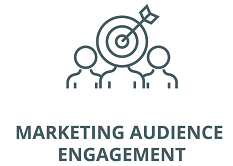Measuring conversion impact is essential for businesses to understand the effectiveness of their content in achieving their business goals. Content marketing has become a crucial aspect of digital marketing strategies, and it is important to align content creation with specific business objectives. By measuring conversion impact, businesses can evaluate the success of their content in driving desired actions from their target audience.
Effective content marketing goes beyond creating compelling articles, blog posts, and social media updates. While engaging and informative content is crucial, measuring its impact on business goals is equally important. To ensure the success of your content marketing efforts, it’s essential to track conversions and connect them to your business objectives. This article will explore the significance of measuring conversion impact and provide actionable insights to help you align your content strategy with your business goals.
Understanding Conversion Impact
Conversion impact refers to the effect your content has on driving desired actions from your audience. These actions can vary depending on your business objectives, such as generating leads, increasing sales, boosting website traffic, or building brand awareness. Measuring conversion impact allows you to analyze the effectiveness of your content in achieving these objectives and make data-driven decisions to optimize your strategy.
Defining Business Goals
Before measuring conversion impact, it’s crucial to clearly define your business goals. Whether it’s increasing revenue, expanding market share, or improving customer loyalty, aligning your content marketing efforts with these objectives is essential for success. By having well-defined goals, you can identify the key performance indicators (KPIs) that will help you measure the impact of your content on achieving these goals.
Setting Conversion Goals
Once you’ve established your business goals, it’s time to set conversion goals that align with them. For example, if your objective is to generate leads, your conversion goal could be the number of form submissions or email sign-ups. If your focus is on sales, your conversion goal could be the number of completed purchases or the total revenue generated. By setting specific and measurable conversion goals, you can effectively track the impact of your content on driving these desired actions.
Measuring Conversion Impact
Measuring conversion impact requires the implementation of robust analytics tools and strategies. Here are some essential steps to help you effectively measure the impact of your content:
1. Implementing Tracking Tools
Utilize analytics platforms such as Google Analytics to track user behavior and conversions on your website. Set up conversion tracking, which allows you to monitor specific actions taken by users, such as form submissions, purchases, or newsletter sign-ups. These tools provide valuable insights into user interactions with your content and help you measure the conversion impact.
2. Assigning Conversion Values
Assigning values to different types of conversions enables you to measure the monetary impact of your content. For example, if a lead is worth $50 to your business, you can assign this value to each form submission. By assigning conversion values, you can accurately assess the financial impact of your content marketing efforts and optimize your strategy accordingly.
3. Analyzing Conversion Funnels
Conversion funnels illustrate the journey users take from their initial interaction with your content to the final conversion. Analyzing these funnels helps you identify potential obstacles or drop-off points, enabling you to optimize your content and improve conversion rates. Use analytics tools to visualize and analyze conversion funnels, allowing you to make data-backed decisions for enhancing your content marketing strategy.
4. A/B Testing
A/B testing involves creating multiple variations of your content and comparing their performance to determine the most effective option. By testing different headlines, visuals, call-to-actions, or landing page layouts, you can identify the elements that resonate best with your audience and drive higher conversion rates. A/B testing provides valuable insights to optimize your content strategy and enhance conversion impact.
Summary
Connecting content to business goals through effective measurement strategies is vital to the success of any marketing campaign. This blog post will delve into the importance of measuring conversion impact and how it helps businesses understand the effectiveness of their content. We will explore various methods and metrics used to measure conversion impact, providing insights into the key elements required for successful measurement. Addition go to this web-site ally, we will discuss the benefits of aligning content creation with specific business goals and how it can lead to improved marketing outcomes.

Hello, I’m Brodie Groom, a professional Content Writer specializing in SEO Testing, Algorithm Research, Ranking Analysis, and Data Analytics. With a passion for all things digital, I thrive on helping businesses optimize their online presence and achieve their goals through strategic content creation.





